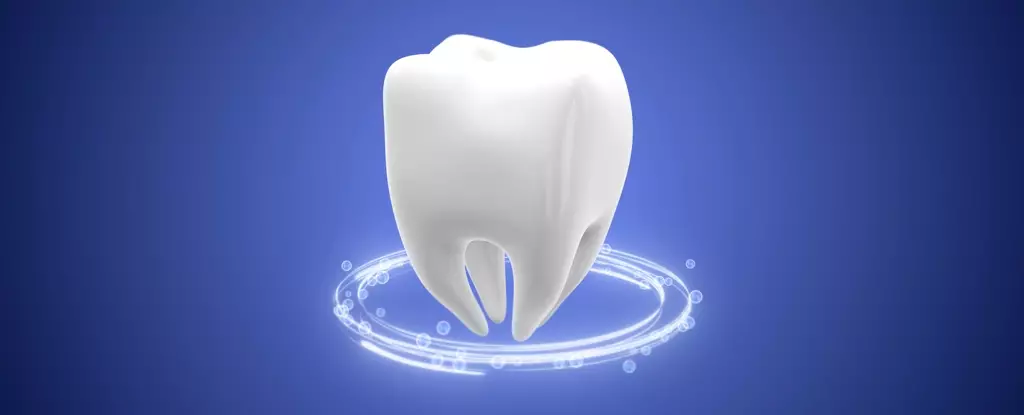The notion of growing teeth in a laboratory may evoke unsettling images reminiscent of horror films, but emerging scientific advancements present a transformative potential in dental care that cannot be ignored. Rather than conjuring fear, this innovation could pave the way for revolutionary treatments aimed at repairing cavities and restoring damaged teeth. Recent groundbreaking research from institutions like King’s College London (KCL) and Imperial College London (ICL) has unveiled a new hydrogel material aimed precisely at enhancing cellular communication, thereby fostering the growth of viable dental structures. This experiment stands as an illuminating point on our path toward integrating science into everyday health challenges—a point that should garner our interest rather than fear.
Biological Insights that Redefine Regeneration
At the crux of this scientific exploration lies a profound understanding of biological processes. The hydrogel developed by the researchers acts as a supportive matrix, utilizing dental epithelial and mesenchymal cells sourced from mouse embryos. This material fundamentally alters the way we perceive dental restoration. Xuechen Zhang, a PhD candidate in Regenerative Dentistry at KCL, suggests that lab-grown teeth will not only regenerate but also amalgamate with the jaw like natural teeth, presenting a solution that surpasses traditional methods of dental repair such as fillings and implants. The primary advantage is the natural resilience of these teeth; they would likely be more robust and durable than foreign materials, which frequently come with risks of rejection.
Much like how our skin repairs itself from cuts, the theoretical ability of tooth injuries to heal autonomously promises a future where dental repairs are seamless and organic. Unlike earlier attempts that failed due to simultaneous signal release—which lacks the subtleties of natural biological communication—this new hydrogel orchestrates a gradual release of communication signals. This mimics the inherent styles of cell interaction within the human body, an aspect that should provide immense reassurance to those wary of the “lab-grown” label.
Scaling Up: From Laboratory to Oral Health
Despite the tremendous strides made, challenges lie ahead in translating success from the laboratory to the human mouth. The next critical step involves determining how to replicate this conducive environment for tooth growth in real-world scenarios. Researchers are exploring a variety of methods, including the transplantation of cells and the implantation of pre-grown teeth. This ambition aligns with an observation from nature: some species can regenerate their teeth continually throughout their lives. While humans are not there yet, the ongoing scientific journey promises continuous innovative discoveries.
Moreover, research into conditions like anodontia—characterized by the failure of teeth to develop—opens doors to yet more hope. Proposed antibody treatments derived from these findings may yield outcomes by the decade’s end. The challenges just brushed upon highlight that these advances are not merely about improving dental aesthetics or catering to those who neglect their brushing schedules. The implications of oral health—specifically tooth loss—extend into broader health realms, linking it to issues such as heart disease and diabetes.
Mapping a New Era for Dentistry
As the field of regenerative dentistry progresses, we stand on the brink of a transformation that could redefine oral health practices. Experts like Ana Angelova Volponi from KCL emphasize that the integration of these cutting-edge techniques holds immense potential to innovate dental care, yielding sustainable solutions for tooth repair and regeneration. The horizon is bright; the shadows of ignorance and archaic methods are fading away in the wake of science and responsibility.
This forward momentum represents not just a technological leap, but also a cultural shift towards prioritizing oral health as a vital component of overall well-being. Instead of relying solely on temporary fixes and cosmetic solutions, we could embrace a paradigm where dental health signifies genuine biological fortitude and resilience. The journey towards regenerative dentistry is not a mere fantasy; it is a tangible future that echoes the wonders of nature and our innate capabilities for self-repair. The real question remains: will we, as a society, embrace this groundbreaking shift and let science lead us to redefine our approach toward dental care?

Leave a Reply